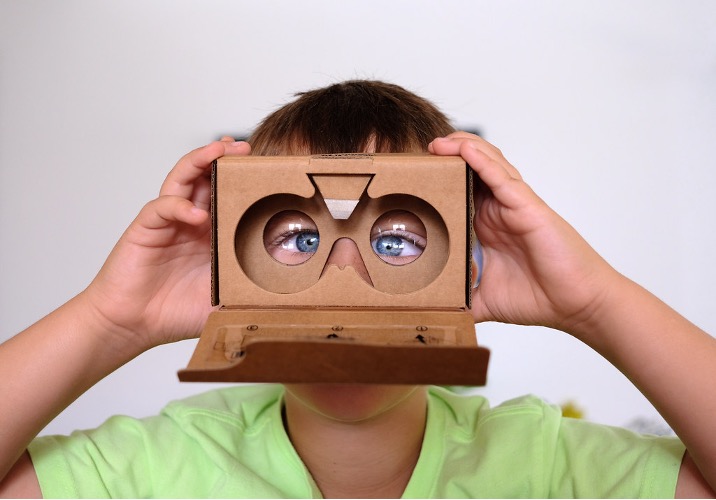
Google Cardboard has revolutionized how virtual reality is accessed… and also how it is thought of. Up until recently, I imagined virtual reality to be a complicated process, often with much technology involved for a high price. I considered virtual reality to be exclusive to a select few who understood its process and the parts involved. However, Google Cardboard has made virtual reality a reality for all users of most ages, with its affordable price, inviting design, and overall simplicity. Moreso, virtual reality can now become an everyday tool in the classroom and grant students access to a world of greater, more in-depth learning opportunities. Specifically important is the direct influence virtual reality has on global collaborations in the classroom. Now more than ever, it is crucial that students become open-minded, thoughtful, and global-minded individuals with a wider perspective on the world around them, as well as collaborative skills to work with the people inside of it.
Before I dive into the ways in which Google Cardboard can be used in global collaborations, here is a quick YouTube video that gives a quick run down on how the device works.
How Google Cardboard Can Inspire Global Collaboration
By tapping into virtual reality worlds using Googe Cardboard, students can experience new locations and cultures like never before. With that said, virtual reality really takes learning to new levels by opening classroom walls to the entire world. Instead of relying on digital media and traditional reading-lecture teaching, students can now immerse themselves directly into learning content and forge more meaningful connections to the material they are learning.
Google has created an app that coincides with Google Cardboard called Google Expeditions. Students can learn about diverse cultures around the world by taking virtual reality field trips with Google Expeditions and can be introduced to global concerns in more personal, direct, and engaging ways. Just one of the many lesson plans in this public Google doc can serve as an example of the ways Google Expeditions can expose students to global issues, ranging from endangered species in Borneo and environmental deforestation to inequality. In further detail, students can witness global warming in real time using this lesson plan paired with the virtual reality headset, or they can take a virtual trip to Antarctica to witness the warming of glaciers.
Ultimately, the opportunities attached to Google Cardboard are growing and limitless. By giving students the chance to experience new cultures, locations, and global issues, students can become aware of how different perspectives are formed and their empathy can grow for all humans. Equally important is that virtual reality can serve as a catalyst for curiosity and passion for students. If students have personal experiences with global issues, such as seeing Biomes and Ecosystems come alive through this Google Expeditions lesson plan, they may become key figures in saving the planet in the future, which will come sooner than we know it.
There are many resources for educators to use when looking to integrate Google Cardboard into the classroom and a lot can be found on this free resource website for teachers in search of lesson plans, https://www.teacherspayteachers.com/Browse/Search:google%20cardboard. One lesson plan, in particular, sparked my curiosity about the many ways in which Google Cardboard can become a springboard to greater global collaboration in the classroom and it can be found here. Educators can use this template as a foundation for their student’s introduction to global themes. In taking it a step further, I imagined students using Google Cardboard for projects that involve classrooms around the world. In doing this, I forsee students being able to connect with one another in deeper ways as they collaborate on projects together and are able to see the work, the students, and the outcomes of their collaborations through virtual reality check-ins. Although Zoom, Skype, and FlipGrid are great ways to collaborate with classrooms globally, virtual reality brings a new level of connection to the situation.
